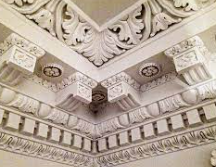Plaster is everywhere in the home. It is one of the many essential building blocks of any building. It gives the house or other building its final finish. It plugs in gaps and makes the home look finished and clean. However, what do you do if your plaster starts to look cracked and worn. Your first port of call should be to call Plasterer Gloucester based company like http://pureplasterers.co.uk/. It will not be possible to fix many of the larger jobs yourself so you are better off leaving this to the professionals. Plastering is a skill that takes years to master and it may well be that the task is beyond you. Before you set about trying to fix the problem yourself you should ask yourself if perhaps it might not be a better idea to leave well alone and seek out a firm of experts to complete the job for you.

The point of plaster is that it is there to be hard wearing and maintain a decent looking finish. Due to its nature it is made up of a cocktail of substances to give it form and strength. It’s a combination of cement, lime and gypsum and when added to water makes a smoothie creamy paste, which looks good enough to eat but is extremely unadvisable, that can be applied to a surface and then set hard. This can then be painted. Most choose white but there is no reason why other shades and colours can’t be used. There is some debate about whether our ancestors favoured colour over white. An example of this historical conflict can be seen in Avebury Manor. The National Trust, who own the property, wanted to leave plaster features white for historical accuracy. The Television film company, who were footing a sizable part of the money for the site’s restoration as part of a programme, wanted it coloured.

The first thing that you will need is a bucket. The golden rule when it comes to mixing plaster to the correct consistency is that you add plaster to the water and never the other way around. The other general rule is that you need to go with fifty percent water and fifty percent plaster powder. Once the mixture is in place you then need to identify any small cracks and liaisons in the plaster. Application is simple in itself, you just need to add it with a trowel or scrapper. You will soon learn if the consistency is correct. If it drips off the walls then there is too much water and if it comes out in chunks there is not enough. Time to call the professionals.